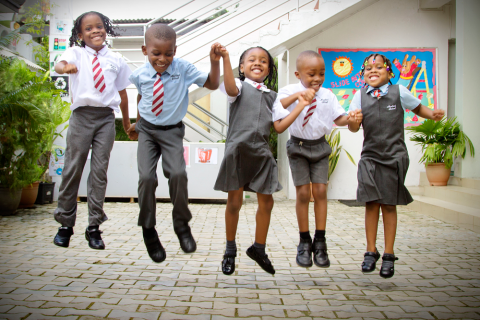
1. Reflects and realises the rights of every child -- cooperates with other partners to promote and monitor the well-being and rights of all children; defends and protects all children from abuse and harm (as a sanctuary), both inside and outside the school
2. Sees and understands the whole child, in a broad context -- is concerned with what happens to children before they enter the system (e.g., their readiness for school in terms of health and nutritional status, social and linguistic skills), and once they have left the classroom -- back in their homes, the community, and the workplace
3. Is child-centred -- encourages participation, creativity, self-esteem, and psycho-social well-being; promotes a structured, child-centred curriculum and teaching-learning methods appropriate to the child’s developmental level, abilities, and learning style; and considers the needs of children over the needs of the other actors in the system
4. Is gender-sensitive and girl-friendly – promotes parity in the enrolment and achievement of girls and boys; reduces constraints to constraints to gender equity and eliminates gender stereotypes; provides facilities, curricula, and learning processes welcoming to girls
5. Promotes quality learning outcomes -- encourages children to think critically, ask questions, express their opinions -- and learn how to learn; helps children master the essential enabling skills of writing, reading, speaking, listening, and mathematics and the general knowledge and skills required for living in the new century -- including useful traditional knowledge and the values of peace, democracy, and the acceptance of diversity
6. Provides education based on the reality of children’s lives -- ensures that curricular content responds to the learning needs of individual children as well as to the general objectives of the education system and the local context and traditional knowledge of families and the community
7. Is flexible and responds to diversity -- meets differing circumstances and needs of children (e.g., as determined by gender, culture, social class, ability level)
8. Acts to ensure inclusion, respect, and equality of opportunity for all children -- does not stereotype, exclude, or discriminate on the basis of difference
9. Promotes mental and physical health – provides emotional support , encourages healthy behaviours and practices, and guarantees a hygienic, safe, secure, and joyful environment
10. Provides education that is affordable and accessible -- especially to children and families most at-risk
11. Enhances teacher capacity, morale, commitment, and status -- ensures that its teachers have sufficient pre-service training, in-service support and professional development, status, and income
12. Is family focused -- attempts to work with and strengthen families and helps children, parents and teachers establish harmonious, collaborative partnerships
13. Is community-based -- strengthens school governance through a decentralised, community-based approach; encourages parents, local government, community organisations, and other institutions of civil society to participate in the management as well as the financing of education; promotes community partnerships and networks focused on the rights and well-being of children
 FR
FR EN
EN AR
AR








